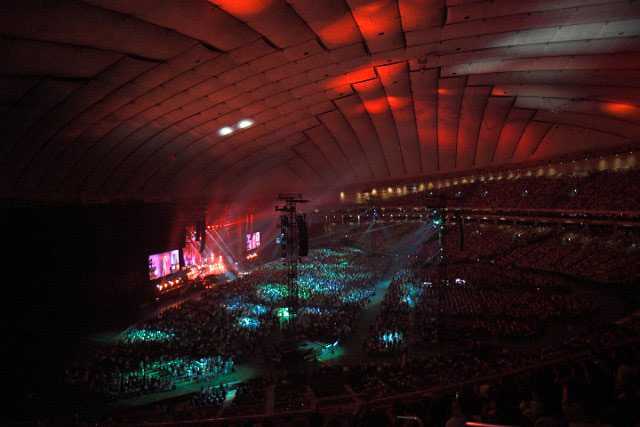L-Acoustics delivers for Céline Dion
- Details

The logistical feat of picking up each system locally, which was dependent on equipment availability, was accomplished seamlessly by Céline Dion’s long-time audio provider, Solotech, achieving consistent sound across the venues on a 22-date marathon thanks to L-Acoustics’ K1 and K2, its international network of suppliers, and its consistency of product worldwide.
“We needed a loudspeaker system that would be available at every venue on the tour,” says Francois Desjardins, VP R&D, technological solutions at Solotech, an L-Acoustics KX standard certified provider. “This was the first time we’d used L-Acoustics on a Céline Dion tour, but we’d been looking at it for a while and we were confident that we would get the consistency of sound we wanted. Not only were we right, but the support we got from the L-Acoustics suppliers along the way was amazing.”
Fourteen suppliers, including Hibino, Winly, Forscink, Mata Elang, Jack Sound and Norwest, were employed over the two-month tour across major venues - Tokyo Dome, Jakarta’s Sentul International Convention Center, Taipei Arena, Mall of Asia Arena in Manilla, Impact Arena Bangkok and the Spark Arena in Auckland - all with varying requirements.
Much of the venue information was supplied by Alvin Koh, L-Acoustics head of application for Asia, drawing from the extensive L-Acoustics library of venue plans. Desjardins and Jon Trudeau were able to model each system in L-Acoustics’ Soundvision software ahead of time, addressing the challenges specific to each venue.
The 40,000-plus capacity, domed Tokyo Arena required the tour’s largest system which comprised two hangs of 16 K1 with four K2 and a centre hang of four K2; two hangs of 20 K2 for side-fill; two hangs of delays of 16 K2 each and two of 14 K2. A dozen Kara provided front-fill, and two ARCS Wide were positioned left and right on the stage lip for out-fill. Low frequency was handled by 12 K1-SB, flown behind the K1 hangs, and 40 SB28 floor subs positioned in front of the stage. Delay subs were four stacks of three SB28.
(Jim Evans)
















